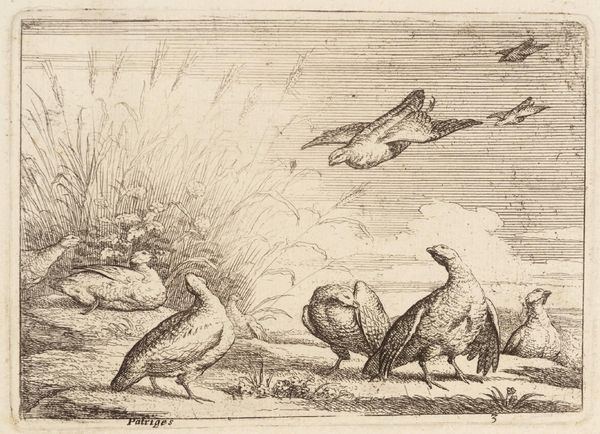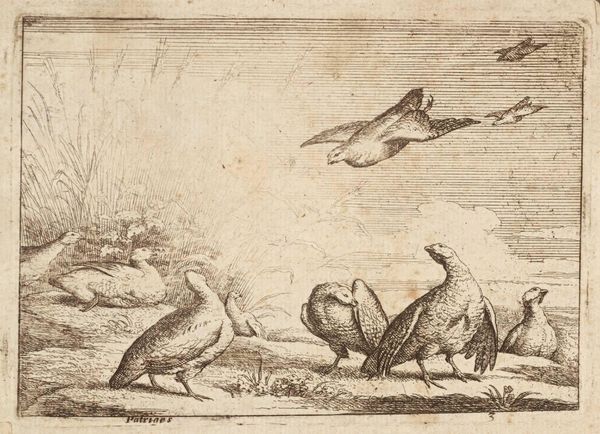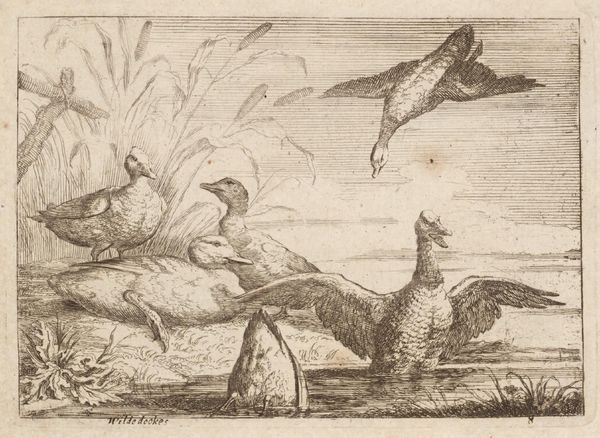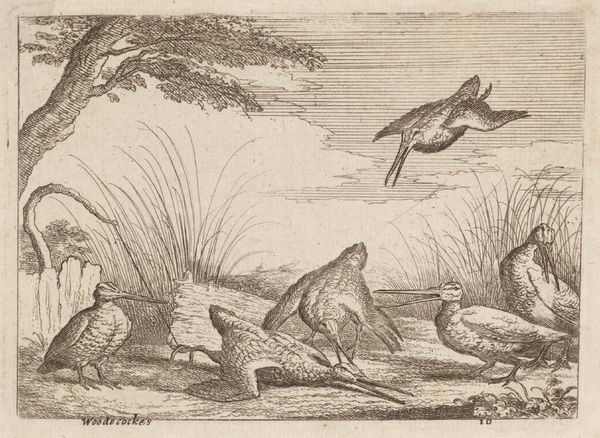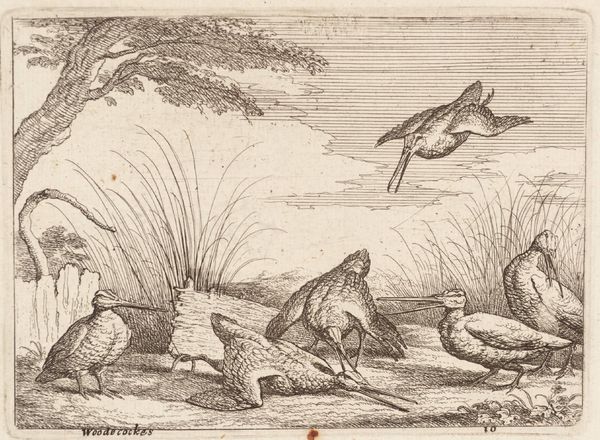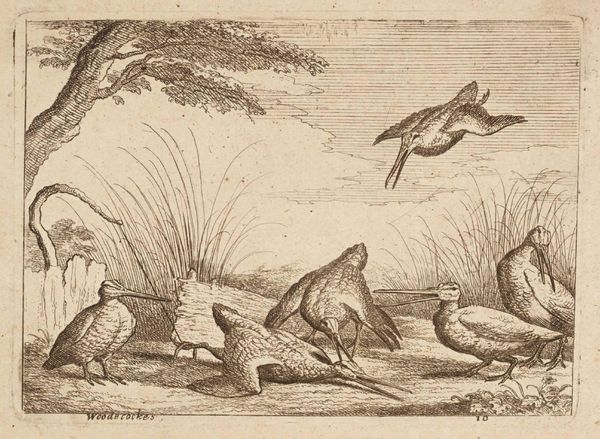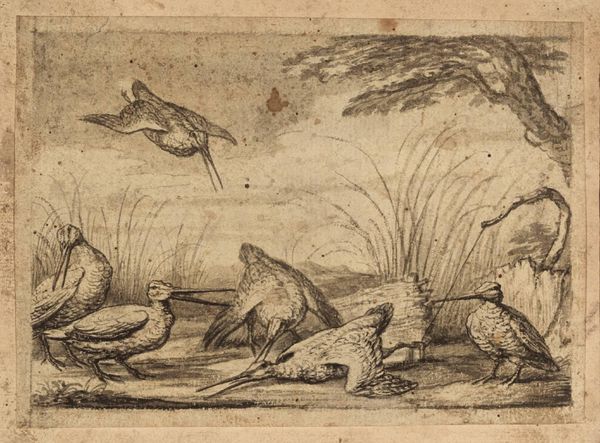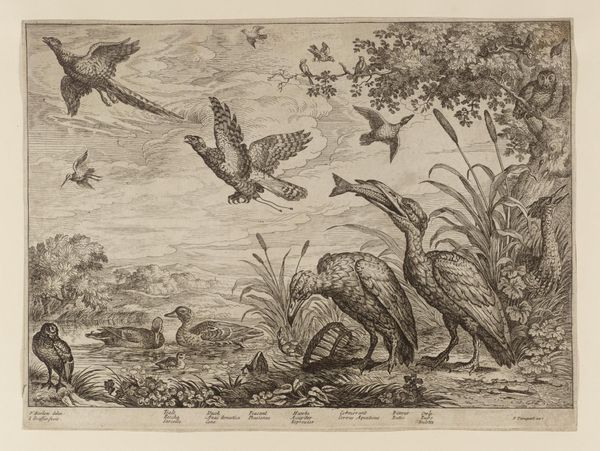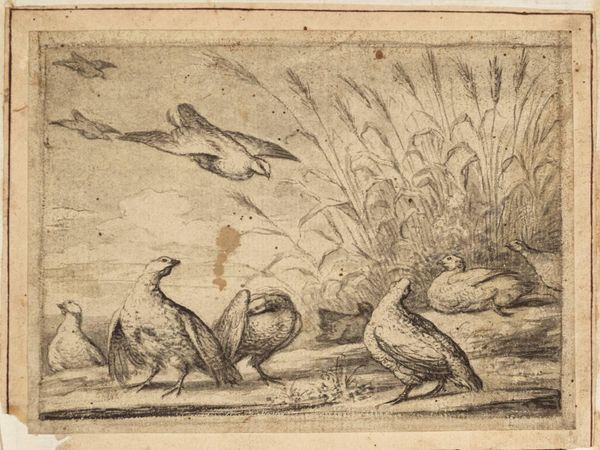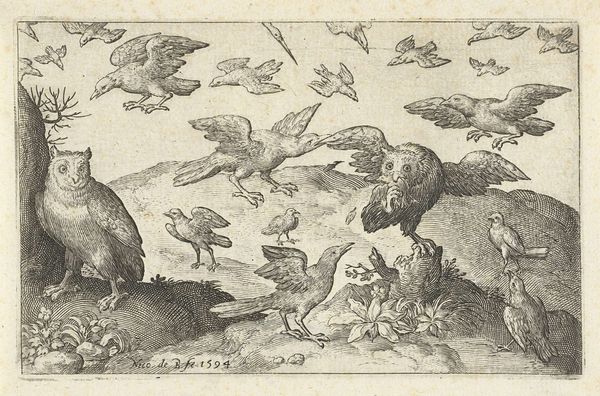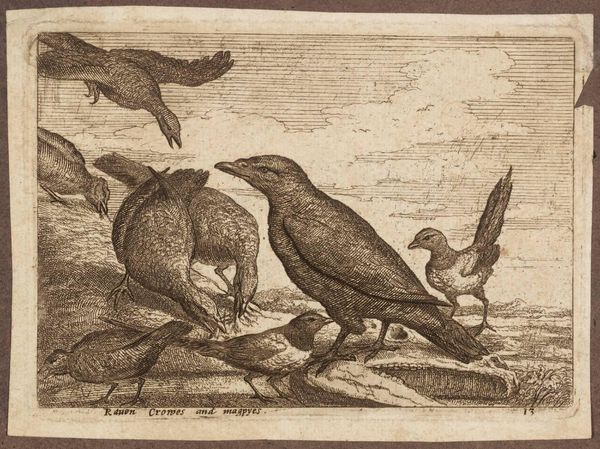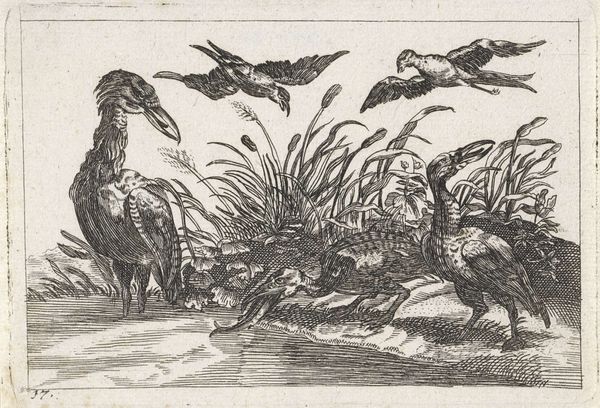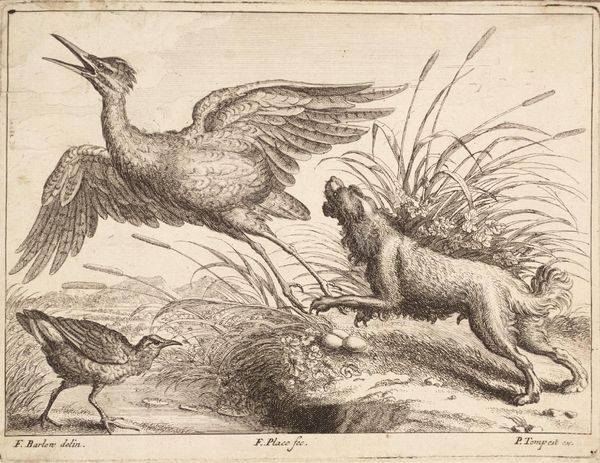
Dimensions: image: 90 x 128 mm
Copyright: CC-BY-NC-ND 4.0 DEED, Photo: Tate
Curator: This is Francis Barlow's "Patriges," held here at the Tate. It's an etching, capturing a covey of partridges in their natural habitat. Editor: The immediacy of the scene is really striking. You can almost feel the sudden flurry as the birds take flight. How was this reproduced? Curator: Well, the etching process would have involved Barlow using a needle to draw into a wax-coated metal plate, then bathing it in acid to bite the lines. It’s a print, allowing for wider distribution. Editor: Exactly. Barlow's work, through its reproducible nature, moves art beyond unique objects to things of wider consumption. What do you think of the line work? Curator: It’s incredibly delicate, isn’t it? The sense of movement and texture he achieves with just simple lines is remarkable. Makes you wonder what Barlow observed. Editor: His skill in rendering the birds' plumage really emphasizes the labour and skilled craft that went into this work. It's not just about the image; it's about the making. Curator: Absolutely. Barlow really had a knack for capturing the spirit of these wild creatures, didn’t he? Editor: A nice reminder of the value that can be produced through simple processes.
